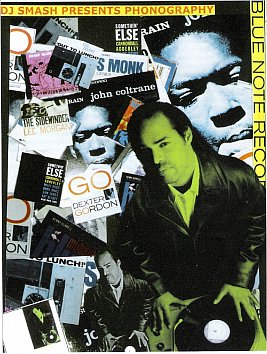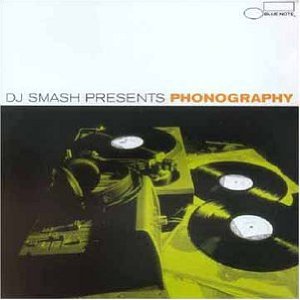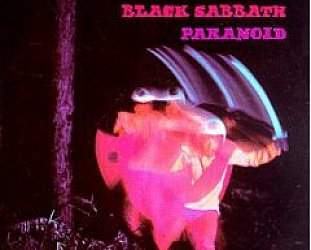Graham Reid | | 5 min read
Bob Belden Project/DJ Smash: Come Together (DJ Kingsize remix, with Dianne Reeves, Bob Belden Project, Cassandra Wilson)

Pity any movement that describes itself
as “New . . .” or, worse, “the future”. By definition i is
fated to an inevitable and humiliatingly early grave when the next
“new” movement, or something else promising to be “the future”,
arrives.
Back in the late Sixties and early
Seventies, new movements, promising to be the future of jazz, arrived
with remarkable frequency. Many came with a code of practice or a
mission statement.
All eventually just found themselves
alongside that which they intended to replace and, with alarming
rapidity, those which replaced them.
ln the Sixties, fusion -- when rock met
jazz, usually at one of Bill Graham’s Filmore's -- was the first
big New Future for jazz, but simultaneously there was also
politicised Free Jazz (as opposed to that propounded by Ornette
Coleman) and Third Stream (where American avant-garde jazz
intersected with European classical music).
However, for anyone discovering Third
Stream in the late Sixties (say the work of classically trained
composer/critic Gunther Schuller and the algebraic music of Anthony
Braxton) it was disconcerting to learn these musical streams had
merged as far back as Stan Kenton in the late Forties.
What was more alarming, at the time of
prog-rock and fusion, was that Kenton described his music as
“progressive” and that term, with all its implications of New and
the Future, had also been liberally applied to Dave Brubeck and other
“cool” jazz in the Fifties.
All these styles juggled alongside each other in the Seventies, so in a weird way Wynton Marsalis’ neo-conservative movement of the Eighties was a relief.
It was back-to-the-future to rediscover
origins for further exploration . . . although what actually happened
was it went back and stayed there, all buttoned up in beautiful
suits.
Reading liner notes on neo-con albums,
especially those by Marsalis’ unbearable cheerleader Stanley
Crouch, was always amusing. If Wynton wasn’t the future then he
was, at the very least, a new Messiah who could forgive your Free
Jazz and funk sins, and was in the pantheon alongside Louis, Duke and
Miles. Whew, such a lot for such narrow shoulders.
Liner notes are often problematic.
If they aren’t a historical overview
on a compilation but for a new band or artist, the best they can hope
to do is place the music and musician in a context, and convey some
sense of enthusiasm. Promising something New or the Future is fatal.
When acid jazz emerged in the late Eighties there was the widespread
belief, especially among young writers and critics, that it was going
to save jazz from becoming moribund (although quite how playing
Fifties and Sixties jazz grooves could be “new” or even “nu-”
was another question).
Once the turntablists arrived and
started mixing and reshaping those grooves over beats and samples
something truly interesting was happening. The breakthrough Us3
album, Hand on the Torch, a decade ago -- featuring their makeover of
Herbie Hancock’s Cantaloupe Island as Cantaloop which became a
clubland favourite -- showed what was possible when canny Nineties
people were given access to a great jazz catalogue.
Blue Note had opened its vaults to them
and their commercial and artistic success lead to other jazz labels,
notably Verve, doing the same.
Blue Note, a historic label finding its
place in the new era (and doing nicely now thanks to Norah Jones,
Medeski Martin & Wood, Cassandra Wilson, Charlie Hunter, The Bird and the Bee among
others), unlocked the strongroom for other remixers.
DJ Smash (Wayne Hunter from New York)
produced two volumes in his Phonography series which collected Blue
Note acts remixed by the likes of Guru, Todd Terry, Us3, DJ Spinna,
DJ Spooky and Joe Claussell alongside cutting edge contemporary
tracks (Greg Osby, Charlie Hunter, Marc Moulin, St Germain) that need
no such tampering to fit into the clubland, groove-orientated ethic.
The first Phonography included thumping
house versions of Smash’s remix of the Bob Belden Projects
treatment of the Beatles’ Come Together (featuring Cassandra Wilson
and Dianne Reeves), followed seamlessly by the Claussell remix of
Tolon Willie (with Salif Keita and Grace Jones), then his mix of
Ronny Jordan’s London Lowdown that leads into St Germain’s
very-Brubeck Rose Rouge remixed by Blaze (who unfortunately choose
to remove the superb drum part and replace with a house-thump).
Those are just the final four tracks
which took the album out in booty-shakin’ style. Before them Guru
has taken on Medeski, Martin & Woods Whatever Happened to Gus
(featuring Guru himself), Spinna has worked over another Ronny Jordan
cut and Nitin Sawhney took Us3's Come on Everybody.
Phonography 2 followed much the same
pattern; some urban funk-lite upfront (Hunter's Street Sounds, Osby‘s
Poetry in Motion and Soulive's wah-wah tickling Bridge to Bama
(remixed by Hi Tek) and the pace picking up later.
Wouldn’t give you much for Belden’s
sexless version of Prince’s Kiss, remixed or otherwise however, but
elsewhere the album juggled the remix and originals adeptly and
enjoyably. And Claussell’s remix of the Wild Magnolias Battlefield
was deeply funky.
But, and this was surprising for an
album by someone out of the famous Giant Steps parties, as with
Phonography 1, it again went past without much notice. Maybe the
jazzy grooves were getting a little passe as people searched for
another New Future?
Certainly the liner notes to the first
volume may have put a few off, especially if you’ve seen new
messiahs and movements come and go.
Tom Terrell claimed Smash as arguably
the most fully-formed visionary of all remixer/producers.
And Smash hailed himself as "a
committed die-hard musical anarchist”. Well, sorry to tell you Tom
and Smash, these two albums were respectful of the Blue Note
tradition, and many others explored similar territory with equal
style.
Nope, it wasn't "New" (or “nu-”) and
it wasn't the Future.
It was, at the time, just a pretty good "Now".
And didn't all those remixers of that early 2000's "Now" recede with humiliating rapidity into the Past?







post a comment